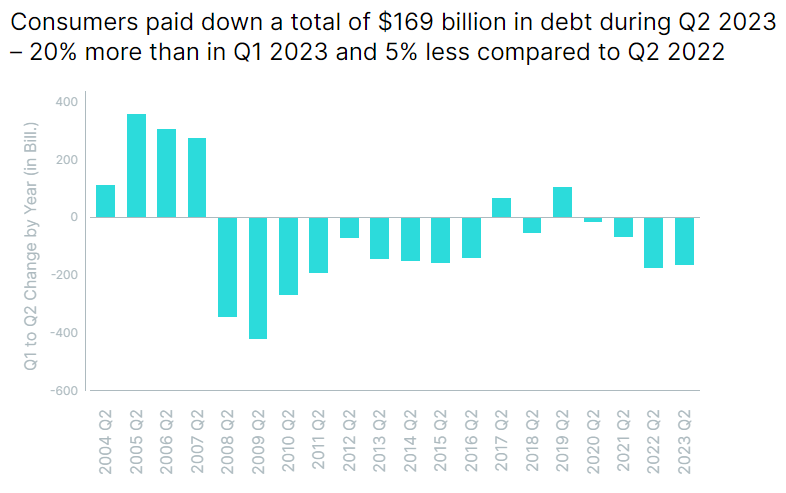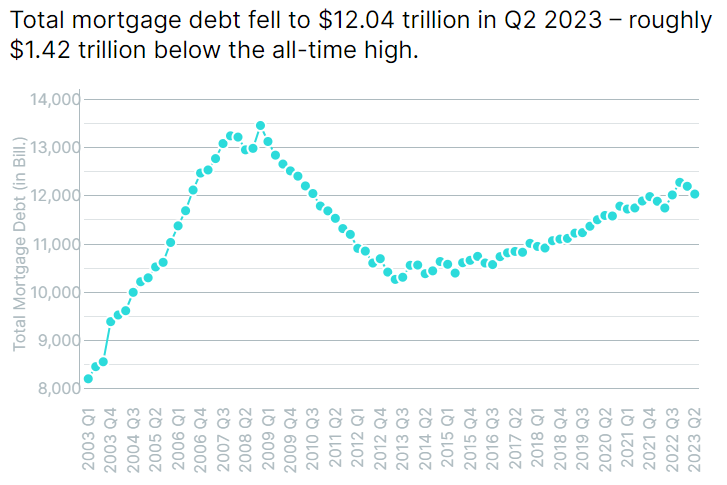American households collectively recorded $17.1 trillion in debt entering Q3 of this year, according to a new Household Debt Report from WalletHub.
Researchers at WalletHub—citing data published this month by the New York Federal Reserve Bank and adjusted for inflation—examined consumers’ overall debt situation and financial health and how it compares to the past.
Analysts found that during the second quarter of this year, Americans paid off $169 billion in overall debt about 216% more than in the average second-quarter in the last 19 years.
Consumers paid off 20% more in Q2 than in the first quarter this year, but paid off 5% less than in the second quarter of the previous year, 2022.

The average U.S. family’s debt is $101,915 as of the end of last year, WalletHub and the New York Fed report.
In housing-related debt, there was $393 billion in newly originated mortgage debt in Q2 2023, according to the New York Fed, “reflecting a modest increase in purchase originations as refinance originations have slowed.”
According to a news release from the New York Fed, “Mortgage balances were largely unchanged from the previous quarter and stood at $12.01 trillion at the end of June, in large part due to declining mortgage originations and slowing home prices. Mortgage originations, which include refinances, stood at $393 billion in the second quarter, representing a $70 billion increase from the first quarter.”
Further examining the role of mortgage and home equity debt in overall American debt, the analysts at WalletHub show that mortgage debt fell by some $161 billion in the second quarter of 2023, which is the sixth largest Q2 pay down since 2004, when these numbers were first recorded.

As listed above, total mortgage debt dropped to $1.204 trillion in Q2 2023, about $1.42 trillion below the peak in 2008.
The average household’s mortgage debt was $101,001 after Q2 of 2023. According to WalletHub, that is $14,260 below analysts’ projected “breaking point” for mortgages.
Debt from home equity lines of credit HELOC in the second quarter of 2023 dipped by $2.7 billion. That marks the 15th second-quarter pay down in a row, but the fifth smallest recorded since 2004.
HELOC debt in total dropped to $341 billion in the second quarter of this year, $685 billion below the peak, as recorded by WalletHub.
Households on average had $2,858 HELOC debt at the end of the second quarter of this year.
Mortgages account for more than 70% of U.S. household debt, according to the New York Fed. Other American household debt, according to WalletHub, is made up of student loans, auto loans, credit card debt and “other.”
To read the full report, including more data, charts, and methodology, click here.

 DSNews The homepage of the servicing industry
DSNews The homepage of the servicing industry









